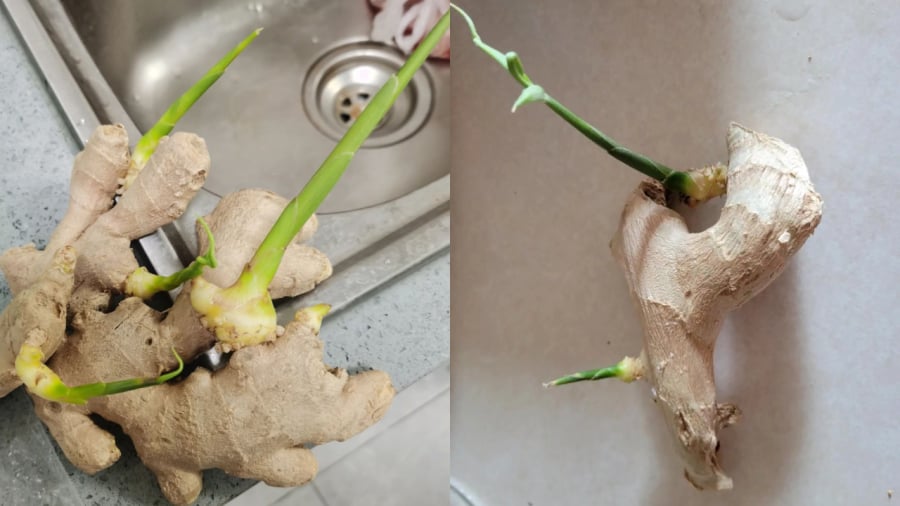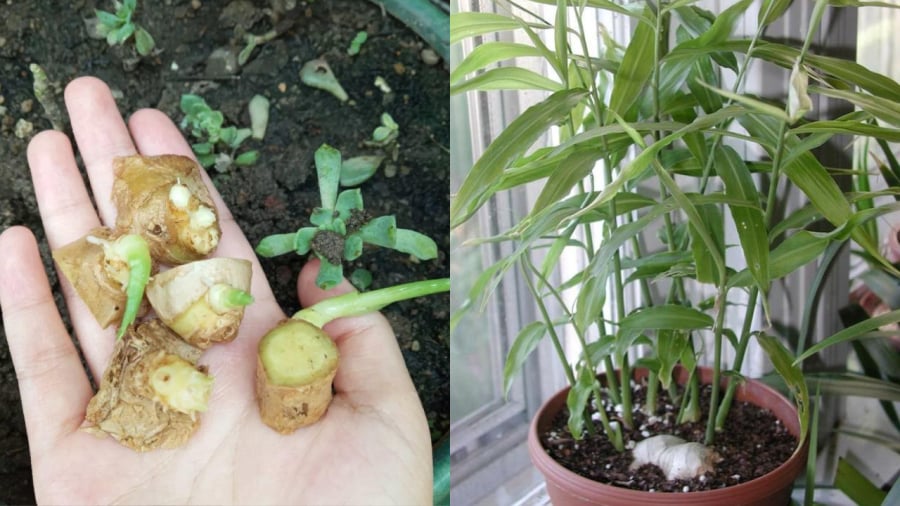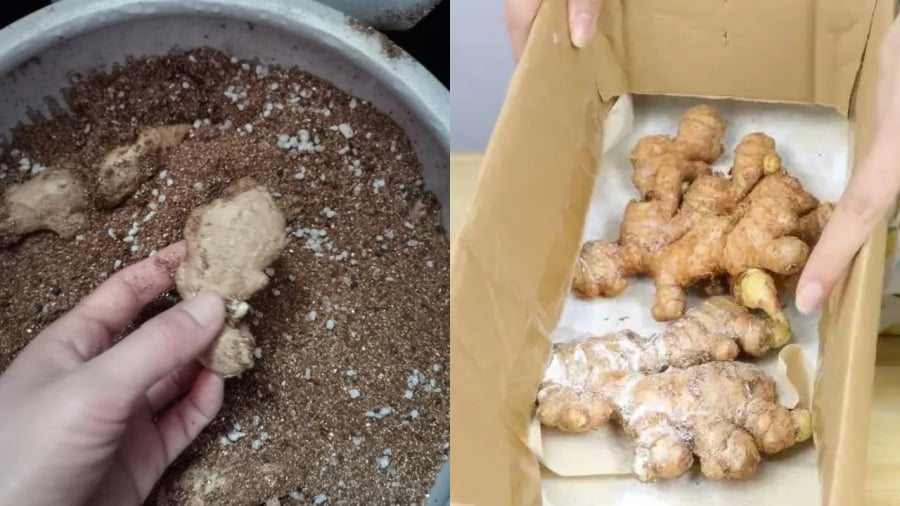Ginger is a common spice found in household kitchens. Apart from cooking, ginger has multiple uses, such as cleaning and deodorizing household items.
Many households buy large quantities of ginger and keep it readily available for immediate use. However, hot and humid weather, coupled with improper storage, can cause ginger to sprout quickly. So, what happens when ginger sprouts? Can you still eat it?

Many people are unsure if sprouted ginger is safe to consume.
Can Sprouted Ginger Be Eaten?
In reality, some sprouted foods are inedible, while others are not only edible but also beneficial to our health. The most well-known toxic sprouted food is probably potatoes. Potato sprouts contain substances that can be harmful to our health and may cause food poisoning, so experts advise against consuming them.
What about ginger?
Ginger belongs to the group of foods that can be consumed even after sprouting. However, the taste and nutritional value of sprouted ginger may not be as potent as its fresh counterpart.
Interestingly, the sprouted part of the ginger may even taste better than the root. The spiciness of these young ginger sprouts will not be as intense as mature ginger.
It is important to note that while sprouted ginger is edible, rotten, crushed, or moldy ginger is not. When ginger rots, it produces a toxic substance called carcinole safrole, which can be harmful to the liver.
If you don’t want to eat sprouted ginger, don’t throw it away! You can plant these ginger roots in the ground to grow new ginger plants. If you don’t want to consume the root, you can still use the ginger leaves to add a unique fragrance to your dishes.

Unconsumed sprouted ginger can be planted to grow new ginger plants.
How to Store Ginger
To maintain the freshness and flavor of ginger and prevent sprouting, proper storage is essential.
Typically, for smaller quantities of ginger, you can store it in a cool, dry place without the need for plastic bags.
For larger quantities, consider the following storage methods to keep your ginger fresh for an extended period:
– Storing Ginger in Sand
This is a traditional food storage method used before the invention of modern appliances like refrigerators and freezers. Simply prepare a container large enough to hold your ginger purchase, and clean, dry sand.
Pour a layer of sand at the bottom of the container, place a layer of ginger on top, and then cover it with another layer of sand. Repeat this process until all the ginger is used up. Keep the container in a cool, dry place. This method will help keep the ginger fresh and prevent it from drying out.

Storing ginger in sand or using baking soda can help keep it fresh and sprouting at bay.
– Storing Ginger with Baking Soda
Baking soda can help keep ginger fresh and sprouting-free for an extended period.
After purchasing ginger, let it air dry. If it’s particularly dirty, use a cloth to wipe it clean. Avoid washing ginger as moisture can cause it to spoil.
Get a large cardboard box and line the bottom with newspaper. Sprinkle baking soda on the newspaper, place a layer of ginger on top, and then cover it with another sheet of newspaper. Repeat this process, sprinkling baking soda between each layer of ginger. Once the box is full, seal it with newspaper and store it in a cool, dry place. Baking soda absorbs moisture, preventing the ginger from spoiling and sprouting.
This method can keep ginger fresh for up to 6 months.
– Storing Ginger in the Fridge
Wash the ginger thoroughly to remove any dirt or sand, and then let it air dry completely. Wrap each ginger root with paper towels or aluminum foil. Place the wrapped ginger in a ziplock bag, squeeze out the air, and store it in the refrigerator’s crisper drawer. This method prolongs the freshness of ginger compared to simply placing the unwrapped root in the fridge.
– Storing Ginger in the Freezer
You can also wash, dry, and cut the ginger into thin slices, shreds, or chop it (depending on your usage needs; the skin can be peeled or left on). Place the prepared ginger in a ziplock bag, squeeze out the air, and seal it tightly. Store the bag in the freezer, and when needed, take out a few slices and use them directly without thawing.

































